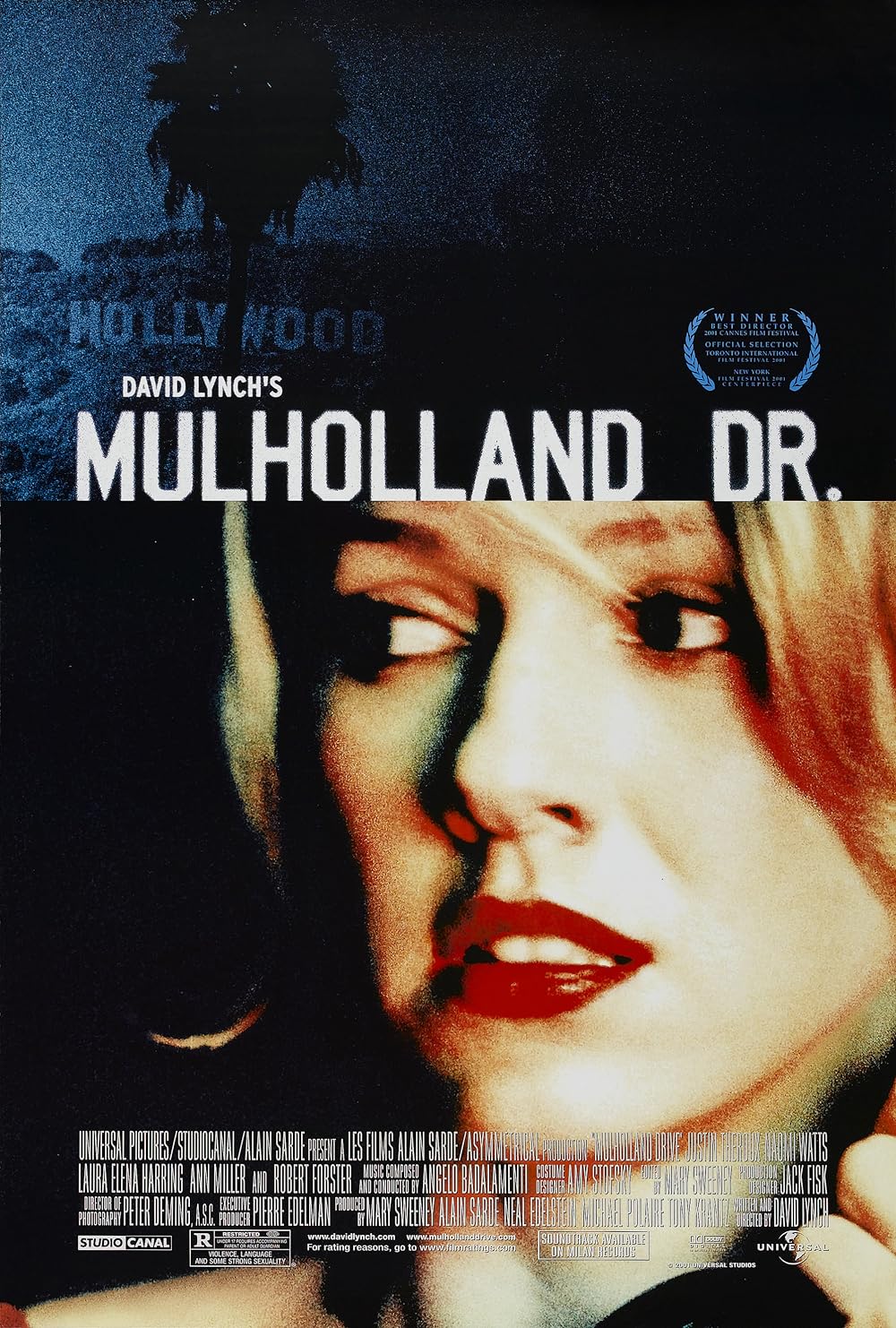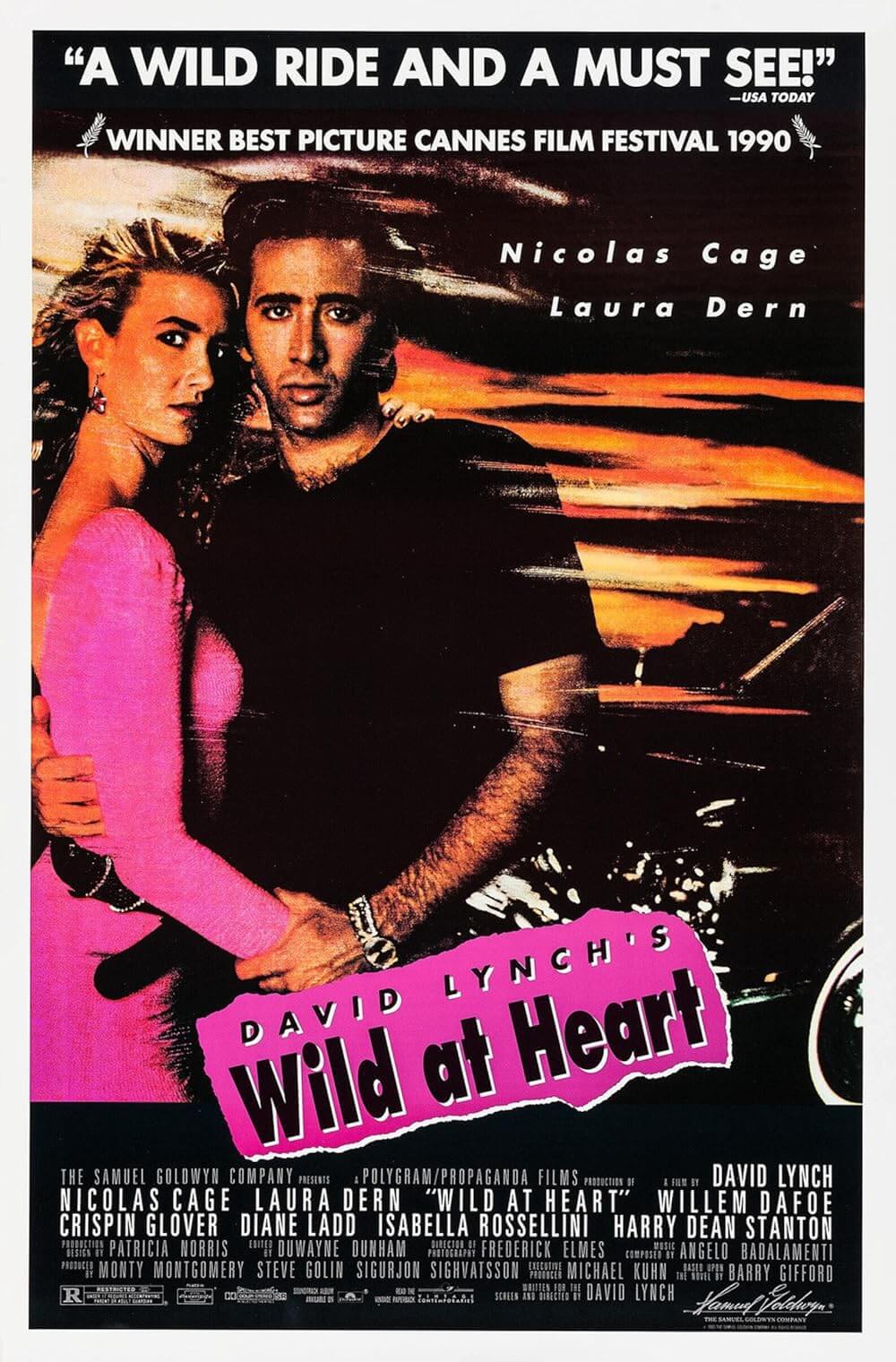The Definitives
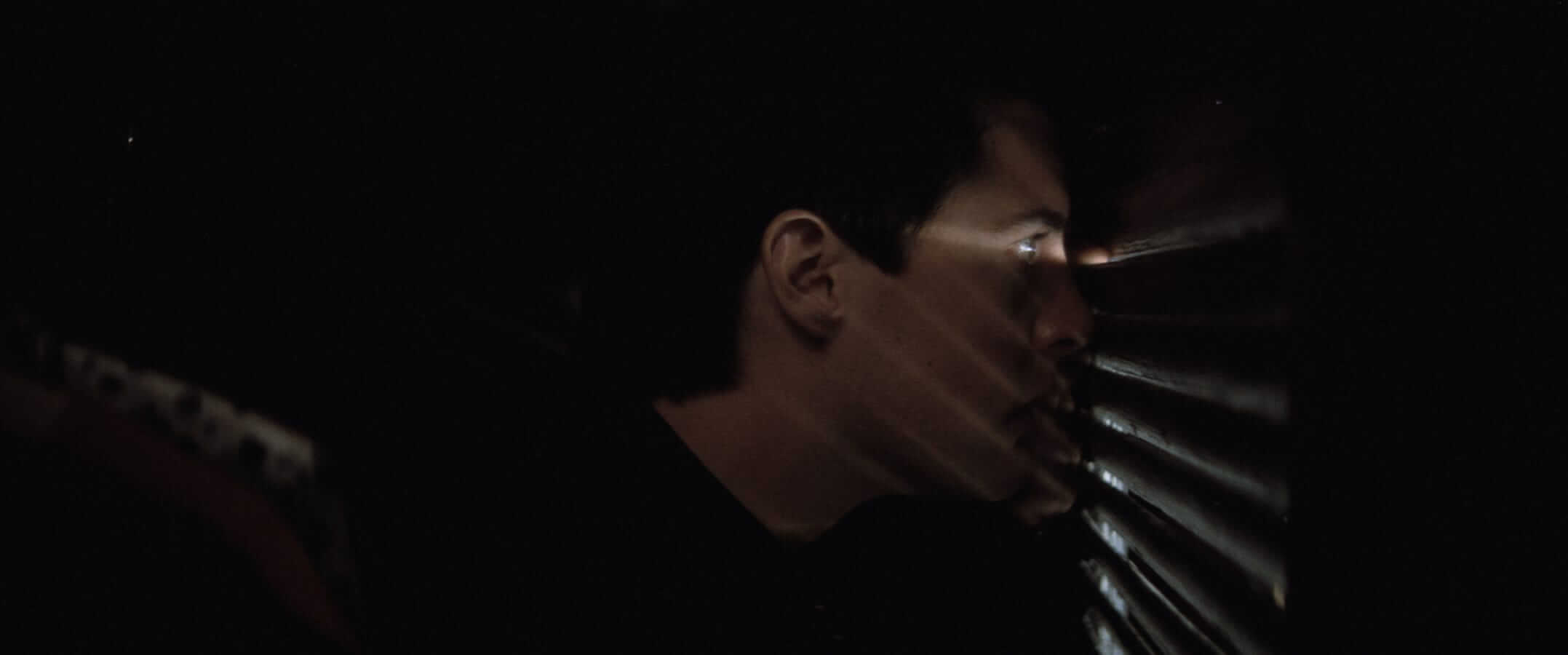
Blue Velvet
Essay by Brian Eggert |
Welcome to Lumberton, USA, a sleepy community with crisp blue skies overhead and emerald green lawns underfoot. In this idyllic American neighborhood of white picket fences, lined by dew-dropped red roses and yellow tulips, you might stop to regard a passing robin on its perch. Or you might wave hello to a firefighter and his Dalmatian as they pass on their red fire engine. If you’re hungry for a bite, Arlene’s diner has the best burgers in town. And if it’s love you’re after, you can stroll the block at night with your sweetheart or maybe meet that special someone at a local dance. It’s best if you avoid wandering down Lincoln Street, though. Dangerous folk down there. As in any town, the unsavory parts of this logging community exist under the surface, in shady nightspots such as the Slow Club or the town’s industrial district. Such places house a seedy criminal element and should be avoided altogether; otherwise, you might find yourself entangled in Lumberton’s mysterious, lurid underworld of voyeurs, kidnappers, sexual deviancy, and sadomasochism.
Whoever said the truth is stranger than fiction hasn’t spent much time with the cinema of David Lynch, whose Blue Velvet supplies a convincing counterargument for this adage with a disturbing yet poetic portrayal of small-town America. In this, his most accomplished picture, Lynch combines idealized 1950s sentimentalities with aberrant evils, and the haunting, confronting experience has been divisive since its release in 1986. Indeed, Lynch’s films function in a completely different universe than any other form of cinema, often inhabiting non-narrative forms of dream logic and avant-garde expression, where intuition is more important than intellectual certainty. In turn, he sets his work apart from traditional commercial filmmakers. Situated in the fictional town of Lumberton—fictional in that several logging cities called Lumberton exist throughout the United States—his picture juxtaposes a place of dreams and nightmares, where two dreamworlds collide and reality floats, intangibly, somewhere in between. An uncanny and thrilling film, Blue Velvet achieves a singular intermingling of Lynch’s polarized narrative and non-narrative styles. At its center is a noirish story wherein a mystery is uncovered and, in due course, solved, but this is done through the filmmaker’s often surrealist worldview, the perspective of an original and often mystifying American artist.

Born in 1946 to a normal middle-class family, Lynch was raised in a succession of American suburbs, moving wherever his father, a research scientist for the U.S. Department of Agriculture, was transferred. His youth was that of a prototypical 1950s boy, shaped by contrasting ideals of the Boy Scouts on weekends and Elvis Presley on the radio. An eventual Eagle Scout, he spent a lot of time in the woods for his father’s job, the forests and logging thereof playing an integral role in his perception of small towns across America. Lynch started to draw and paint at an early age and would study painting and eventually filmmaking in college, making a series of avant-garde short films that explored the notion of bringing paintings to life. Beginning with a small grant from the American Film Institute, Lynch set out to make his first feature, the anxiety-ridden Eraserhead, which began filming in 1972 and was slowly completed over the next five years as small loans and paychecks from a paper route allowed. Set in a crumbling industrial cityscape, the fever-dream film stars Lynch’s frequent collaborator Jack Nance as Henry, a man lost in his cataclysmic visions and charged with caring for a sickly, deformed child. Eventually released to cult reverence on the midnight movie circuit, Eraserhead spread around the country over the next few years and got Lynch noticed by Hollywood.
He entered the realm of commercial filmmaking thanks to Stuart Cornfeld, a producer who recognized Eraserhead’s unique black-and-white vision and, after failed attempts to develop another original Lynch film, introduced the young filmmaker to Mel Brooks. Lynch was hired for Brooksfilms’ production of The Elephant Man (1980), a production that took the young filmmaker from a shoestring independent with an amateur cast to directing thespians such as John Gielgud, Anthony Hopkins, John Hurt, Wendy Hiller, and Anne Bancroft for a major motion picture. Again working in gorgeous black-and-white, but this time on a formal period piece, Lynch’s avant-garde roots gave the resulting picture bizarre undertones in bookend dream sequences. The lauded film was nominated for eight Academy Awards nonetheless, including Best Picture and Best Director. Almost overnight, this unconventional filmmaker found himself under the Hollywood spotlight, where he famously turned down an offer from George Lucas to helm Return of the Jedi (1983). Instead, Lynch agreed to make a different megabudget science-fiction film when he signed with Dino de Laurentiis of the De Laurentiis Entertainment Group to adapt Frank Herbert’s Dune, a production far removed from his experimental origins. The troublesome production over which Lynch had little creative control would, in 1984, ultimately become a colossal failure in every sense. It may have marked the end of his short career thus far had The Elephant Man not been such a resounding success.
Blue Velvet announced a return to creative filmmaking for Lynch, who had grown disenchanted with the idea of working on a Hollywood film on which he had no final cut rights. Despite the failure of Dune, De Laurentiis approached Lynch about a script the director completed before The Elephant Man and had since composed alternate drafts for Warner Bros. to produce. That studio passed on Blue Velvet because, as Lynch would later admit, his early drafts contained nothing except the ugliness shown in the final film. The script had exchanged hands in Hollywood for several years until De Laurentiis showed interest. But, coming from his experience on Dune, Lynch demanded final cut from the producer, who approved only if Lynch agreed to reduce his budget by half to a mere $6 million. Desperate for the artistic freedom and autonomy he savored on Eraserhead, albeit within a standardized shooting schedule, Lynch agreed and secured himself artistic control. The small production shot from February to April 1986 at the EUE/Screen Gems studio, a facility then-owned by De Laurentiis, as well as many actual locations in Wilmington, North Carolina. By coincidence, just seventy miles north of Wilmington was a town called Lumberton.
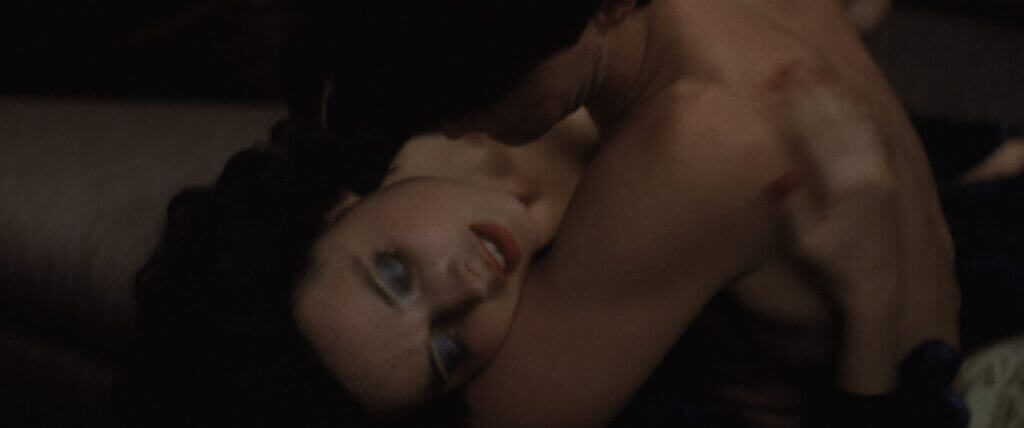
The story opens with college student Jeffrey Beaumont (Kyle MacLachlan) returning home after his father is hospitalized from a stroke. One day, while visiting his father, Jeffrey passes through a field and finds a human ear rotting and teeming with ants. He reports the find to Detective Williams (George Dickerson) and soon learns that the Detective’s daughter, high-schooler Sandy (Laura Dern), has inside knowledge of the case from listening to her father’s conversations. From only bits and pieces of overheard talk, Sandy has put together that the case involves a lounge singer named Dorothy Vallens (Isabella Rossellini). Intrigued by a mystery, Jeffrey wants to investigate and concocts a plan to sneak into Dorothy’s apartment for clues, first by posing as an exterminator to get her key, and then later, snooping inside when no one’s around. Together, he and Sandy catch Dorothy’s show at the Slow Club, where she sings a sexy, if distant, version of “Blue Velvet” for a rapt audience. They leave early to carry out Jeffrey’s plan with the stolen key. A premise born from Lynch’s fantasy that, as a Peeping Tom, he might see something leading to a mystery, Jeffrey gets into Dorothy’s apartment one night and must hide in her closet when she comes home unexpectedly.
Behind the safety of closet doors, Jeffrey watches Dorothy undress and cover herself with a robe. When he accidentally makes a noise, she catches him hiding. Thinking him just a voyeur, she holds him at knifepoint and begins to act out what she feels would be his fantasy. Just then, a knock at the door interrupts them. She nervously sends Jeffrey to hide in the closet again and scurries to answer the door. Enter Frank Booth (Dennis Hopper), a leather-jacketed, gas-sniffing sociopath who rapes Dorothy on her living room floor and, as Jeffrey gathers, has kidnapped Dorothy’s husband and little boy to keep Dorothy performing for him in this way. After witnessing this, shocked, Jeffrey watches Frank leave. Dorothy tells him it’s safe to come out and tries to throw herself on her secret admirer once again, desperate for any form of positive attention to counteract her abuse from Frank. Only when Jeffrey returns the next night does he bed this desperate and defeated woman, reluctantly carrying out her wish for Jeffrey to strike her. So long abused by Frank, she has grown to enjoy it.
Frank Booth would represent a comeback role for Hopper, whose earlier years of substance abuse had come to an end. 1986 would be a breakout year for the Easy Rider icon, reestablishing Hopper not only with Blue Velvet but in the basketball drama Hoosiers. When he read Lynch’s script, he famously called the director and argued he should be cast because “I am Frank!” Although such a pronouncement could only be the exaggeration of an enthusiastic actor, Frank is a benchmark of cinematic evil and morbidity. His rape of Dorothy is not some forced vaginal intercourse but rather a dry act involving scissors, her blue velvet robe, copious use of the F-word, several strikes to the face, and hits from Frank’s gas mask. “Don’t fuckin’ look at me!” shouts Frank throughout the scene, inhaling euphoric gas that Lynch originally wanted to be helium to alter Frank’s voice. When Frank says, “Daddy wants to fuck,” it would have been in that childlike, high-pitched helium sound. Hopper suggested nitrous oxide instead, as he had seen people use this rapture-inducing gas to enhance sex before. Stranger still is Lynch’s original notion that Frank would carry a helium mask whose only advantage would be its voice-altering qualities.
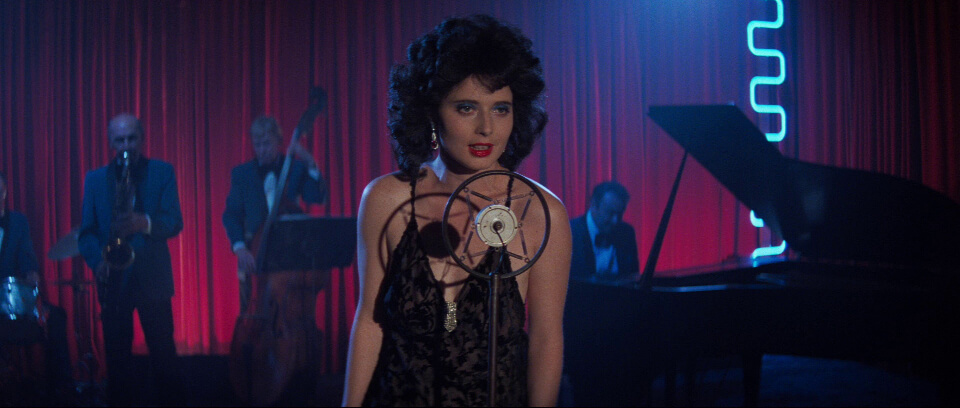
Blue Velvet’s undeniable, often so-odd-it’s-comical strangeness is not a reflection of reality as we know it. Lynch has described himself as a “radio” trying to “tune in” to his dream states through the medium of film. He admits much of the film was based on dreams and feelings that inspired his writing. As a result, intellectual analysis of what happens within his films defeats the purpose of Lynch’s work. They should be felt, not explained. Those close to Lynch have confirmed he has no knowledge of either Freudian logic or psychoanalytic theory, despite his characters being so commonly considered through diagnoses and explanations founded by those schools of thought. Instead, he uses observations from his dreams as the vocabulary of his films, applying them in the same way a painter does with oils on canvas. Watching a David Lynch film, one must notice his careful application of aural textures, deliberate movements, and calculated rhythms in his actors’ speech. His transitions often fade into blackness from one scene to the next in the same way dreams shift locations or perspectives without cognitive rationalization. As Lynch historian Chris Rodley suggests, we often feel a sense of dread more than terror in his films, because dread is something we recognize and anticipate, whereas terror is a single jolt or shock—dread being the dream, and terror being the moment we wake up. At the same time, Lynch loves a mystery, and in narrative terms, a mystery is the equivalent of the dreamer’s drive to explain the dream’s sense of dread. And so, Lynch’s films frequently contain characters who attempt to define the mystery inherent to their dreamworlds. In this, his adoption of dream imagery and subconscious film feeling has long fostered an association between his work and surrealists.
Directing cinematic dreams offers a certain free-form creativity, and Lynch has been described as an actor’s director who allows his performers to improvise and develop backstories for their characters. With Hopper, Lynch gave the actor the freedom to play the role of a mad criminal who had become so obsessed with a nightclub singer that he must hold her family hostage and bring them harm should she try to escape by suicide. When he’s with Dorothy, he turns the lights down, and after raping her, he whispers, “Now it’s dark.” Demented as he is, he does not want to be observed; this would force him to acknowledge his twisted self. Moreover, the play of darkness and light is a recurring motif in Blue Velvet—that such extreme, festering evil exists in the darkness of the world, but blinding love comes from light. Also in the darkness then is Rossellini’s Dorothy. Daughter of actress Ingrid Bergman and Italian film director Roberto Rossellini, in 1986, she was best known as a model and cosmetics spokesperson for Lancôme. She had only acted in one major role, the dancing film White Nights (1985). Lynch originally sought Helen Mirren to play Dorothy Vallens, but then reconsidered when he met Rossellini. She portrays Dorothy as a damaged victim, split between her devastated state and the identity she has been forced to adopt to keep Frank happy and her family safe. A shell of a human being by the time Jeffrey meets her, she’s little else beyond a wig and her doll-like makeup, which disguise her inner trauma. Even the comparatively gentle affection of Jeffrey’s boyish voyeurism seems intimate next to the violent sexual assaults by Frank Booth.
In short order, Frank catches Jeffrey with Dorothy and takes him on a joyride as a warning, an underworld odyssey into the deranged underbelly of Lumberton. Jeffrey barely survives and, having photographed Frank’s world, the next day reports his findings in the mystery to Det. Williams: Jeffrey has witnessed Frank engage a cop, whom Jeffrey calls the Yellow Man (Fred Pickler), and another, mysterious figure he calls the Well-Dressed Man. Together, these characters are involved in drugs and the kidnapping of Dorothy’s family. Alarmed but intrigued by Jeffrey’s amateur detective work, Williams tells Jeffrey to keep his distance until the authorities close the case. In the meantime, Jeffrey and Sandy explore their mutual affection at a local dance, but their peaceful night is disturbed when Dorothy appears on Jeffrey’s lawn, nude and covered in bruises, spouting jarring phrases: “He put his disease in me.” Rossellini based her appearance in this moment on photographer Nick Ut’s famous snapshot of the nude girl burning from napalm in the Vietnam War, her body hanging like a marionette or wilted flower, every inch in pain. It’s an image no viewer will soon be able to shake. In the end, Jeffrey rushes off to Dorothy’s apartment to catch Frank by surprise and hides in the same closet with a gun. When Frank enters and opens the closet door, Jeffrey fires. After it’s all over, Lynch returns us to Jeffrey’s neighborhood the morning after, the safe and shining American idyll where the picket fences are still white, the skies are still blue, and all order has been restored.
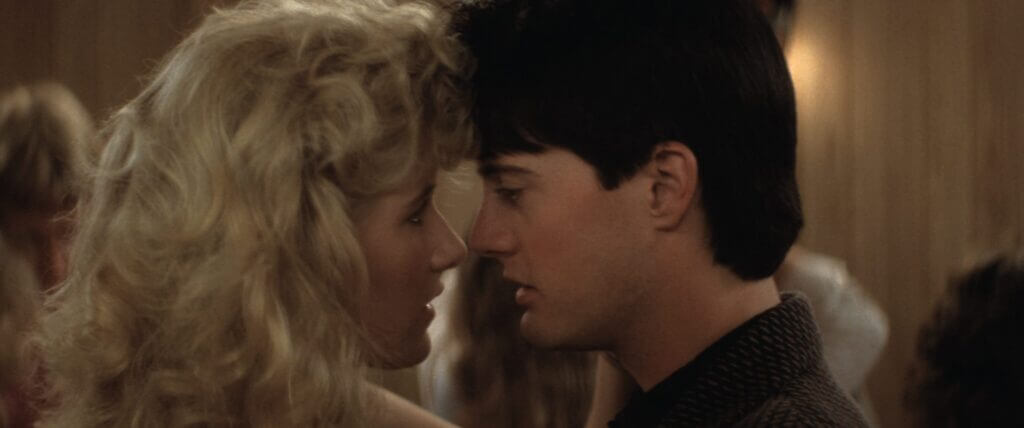
Early in the film, Lynch uses the moment when Jeffrey finds the human ear—which we learn belongs to Dorothy’s husband—to establish how Jeffrey, and thus the audience, has left the peaceful front of Lumberton with all its 1950s sensibilities and entered into a darker world of the subconscious mind. In the field, the frame slowly takes us inside the ear canal. Sound designer Alan Splet’s peculiar industrial noises hum as we move inside. From this narrow hole, we enter the brain, the mind, and scary places people from Lumberton would seemingly never go—places where mysteries develop. Here, Lynch is free to explore darker concepts of criminality, violence, and sexuality, the latter of which Lynch has described as the source of all domestic “trauma, fear, power, and euphoria.” Finding the ear excites something in Jeffrey, who is an obvious reflection of Lynch himself—complete with his shirt buttoned tight on the collar, his appearance tidy, his disposition eccentric, his curiosity unhinged, and his capacity to look into a world other than his own unhindered. The ear provides a way into Jeffrey’s subconscious desires, voyeurism, and sexual fantasies, and though his morbid curiosities and later involvement with Dorothy demonstrate Jeffrey’s fascination with this other world. But he’s not Lumberton’s only wholesome-but-curious citizen. Sandy, too, admits she listens in on her father’s casework, her bedroom being right above Det. Williams’ office; and after all, she does agree to Jeffrey’s plan and becomes entangled, though not so deeply, in the film’s mystery.
Nevertheless, Sandy’s wholesomeness is never corrupted or even tarnished to Jeffrey’s extreme. Her girl-next-door goodness serves as an opposite to the photographic negative that is the damaged, deranged Dorothy Vallens. Blue Velvet is a film of many such polarities: clean Lumberton neighborhoods are contrasted by a dirty underworld; the reverse of the idealized 1950s morality is a corrupt modernity inhabited by gas-sniffing psychos; Sandy’s serene love is the antithesis of Dorothy’s base and traumatic desire. Lynch uses recurring visual themes as further emphasis, associating goodness with bright, picturesque Nature; he associates evil with all that is dark and industrial. At one point Sandy relates her dream to Jeffrey, in which love is represented by a bevy of robins bringing infinite love-light to all the world. However, in the opening shots of Lumberton’s Rockwellian neighborhood, Lynch’s camera progresses beyond the spotless setting and moves down into the green grass and beneath it, into the soil where a writhing horde of ruthless insects burrow. Only in the end, when the mystery has been solved and Frank is gone, does the camera pull out of the ear—Jeffrey’s ear this time—and reemerge from the nightmare of the human subconscious. In these final scenes, safe and sound in Lumberton, Jeffrey and Sandy spot a robin on its perch with an underworld bug in its beak. Love has conquered evil. How ironic that Lynch used an evident animatronic bird to complete this shot, in a way suggesting, perhaps by design, that despite how things look all is not as it appears. This moment becomes about the way we accept and, in doing so, ignore the darkness in the American idyll, in all of humanity, and indeed, in our own subconscious minds.
Lynch also does with music what he does with visual themes, employing both classical music and 1950s-1960s-era popular and rock to identify the dream, complicate it with notes of tragedy, and finally twist it into a nightmare. Blue Velvet was at first inspired by Bobby Vinton’s cover of “Blue Velvet,” recorded in 1962—a hit whose rights the director toiled to secure—from the 1950 original by The Clovers. For Lynch, the song encapsulated his view of America, a country reaching for its dreams and corrupting itself along the way (“And I still can see blue velvet/Through my tears”). It’s a heartbreaking song about fonder days in the past, thus aligning with Dorothy’s memories of her family and our own glorification of the 1950s American Dream so prevalent in Lumberton. And yet, while writing the script, Lynch had been listening to Dmitri Shostakovich’s 15th Symphony regularly and even played this piece on-set to help the actors develop the mood he wanted. Composer Angelo Badalamenti, on his first of many collaborations with Lynch, implemented mysterious, melancholy airs and directly quoted Shostakovich to bring a sense of gravitas and mystification to the film.
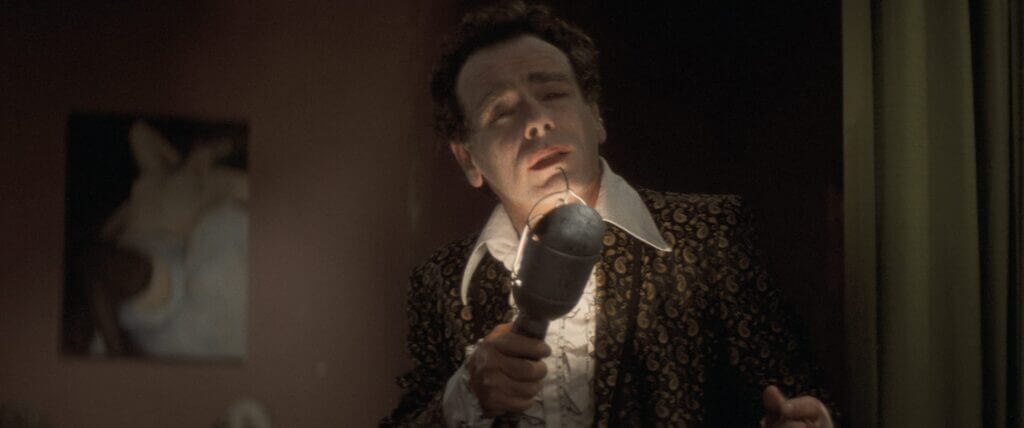
More significant even than the title song, however, is Lynch’s intuitive use of Roy Orbison’s “In Dreams,” a lullaby and rockabilly tune whose outward innocence is given entirely new meaning in this narrative context. Lynch originally wanted to use Orbison’s “Crying” in the film and played that song from a Greatest Hits album for his cast and crew. Afterward, he left the recording to play and the next song on the album was “In Dreams,” a song he had never heard. Lynch changed his mind in an instant. During Frank’s maniacal joyride for Jeffrey, they stop to meet Ben (Dean Stockwell), a “suave” and makeup-caked criminal whose apartment, where Dorothy’s husband and son are held captive, is littered with oddballs and layabouts. Frank loads a tape, and “In Dreams” begins to play while Ben switches on a utility light and performs a haunting dance and lip-sync. After all of the dreadful sights and iconoclastic revelations in the film to this point, all at once the lyrics have profound meaning: “In dreams you’re mine/All of the time/We’re together/In dreams.” Moreover, what was originally a lullaby theme transforms into nightmare imagery after Lynch has smashed our perceptions or made us suspicious of all things seemingly innocent. Orbison’s descriptions of a candy-colored clown tiptoeing into a bedroom at night now contain all manner of suggestive and scary undertones. The song offers a perfect metaphor for how Lynch has brought together two polarized, dreamlike worlds in the film.
When it was released in 1986, reviewers either hailed Blue Velvet as a modern American masterpiece or, as in Roger Ebert’s famous derision-filled assessment, condemned the picture for going into such dark territory. Had Lynch made the film into a piece of low-brow horror schlock, reviews would have been far more forgiving, if not dismissive. But instead, the film is made with incredible craft and imagination; it extols all the qualities of a major piece of filmic art, making it at once immediate and valid. Great art that confronts to the extreme level this film achieves is often considered dangerous. Slowly, even cineastes who despised the film could not stop talking about how it affected them, which, of course, was Lynch’s intent, and the intent of most thrillers—to take us into a nightmare world and then bring us back again, safe and sound. Detractors loathed the film because it worked so well at making them feel unsettled. A domestic $8.5 million box-office take assured Lynch’s financial recovery from Dune, while the growing critical reevaluation could not deny the director’s presence as a significant artist in his medium. Lynch earned his second Academy Award nomination for Best Director, while much later the American Film Institute included Blue Velvet on several of its best lists, among them the AFI’s lists for the top thrillers, top mysteries, and Frank Booth as a top villain.
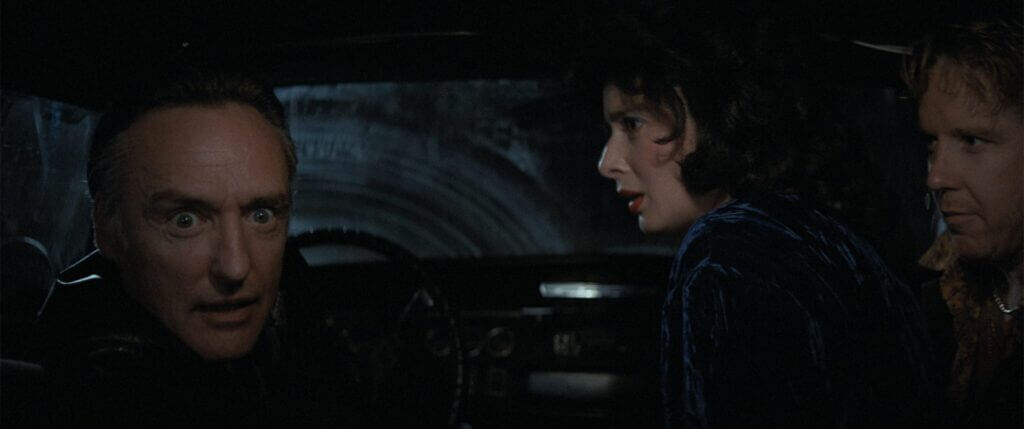
In his films after Blue Velvet, Lynch would continue to explore the dynamic between an idealistic ‘50s-hued small-town atmosphere and the sordid happenings beneath the façade. On television, he and co-creator Mark Frost developed Twin Peaks (1990-1991) for ABC, about an ongoing FBI murder investigation in a seemingly quaint logging town populated by strange characters. It lasted two seasons before being canceled after an unresolved cliffhanger. Lynch filmed a prequel feature for a theatrical release in 1992 called Twin Peaks: Fire Walk with Me, though it hardly answered the show’s lingering questions. Nor did his limited event series, Twin Peaks: The Return, released by Showtime in 2017. But viewers hoping for answers miss the point of his dreamlike creations. Around the same time as Twin Peaks, Lynch debuted Wild at Heart (1990) at the Cannes Film Festival and won the Palme d’Or, despite conflicting assessments. The ultra-violent road comedy stars Nicolas Cage as a pseudo-greaser and Elvis wannabe on the lam with his sexpot girlfriend (Laura Dern), encapsulating an explosion of societal violence and sexual exploration in early 1990s America. Another kind of duality was explored in Lost Highway (1995), Lynch’s Generation X-infused meditation about psychological trauma, madness, and murder within a Möbius strip narrative.
Although each of Lynch’s films to this point investigated a kind of ugliness, in The Straight Story (1999), a G-rated film distributed by Walt Disney Pictures, the director presents a warmhearted true story about Alvin Straight’s journey across Iowa and Wisconsin on a lawnmower to visit his dying brother. It seems to exist entirely in the spirit of the sunny side of Lumberton. If that film surprised his critics for its clear-cut occupation of the good real world, then Mulholland Drive (2001), a picture whose footage was largely assembled from an unaired TV pilot, was a return to nightmarish Lynchian form. This highly interpretable voyage into the thematic territory of Hollywood politics, women in trouble, and the subconscious mind is now considered one of the finest films ever made, earning a place on Sight & Sound magazine’s prestigious Top 50 list in 2012. The structural genius behind Mulholland Drive resides in its capacity to elicit multiple interpretations from any range of viewers, as the audience always feels like they have a grasp on what’s happening, until they don’t, leaving any sense of understanding up to the viewer. Less successful was Lynch’s last film, Inland Empire (2006), whose embrace of the subconscious resists even the intimation of narrative cohesion.
No other Lynch film affects or transports more than Blue Velvet. Unlike the pure nightmare worlds of Lost Highway or Mulholland Drive, the viewer never feels completely astray inside some horrible subconscious delusion, nor does the viewer feel immersed in the over-the-top comic irony of Wild at Heart—even during the film’s most surreal moments. Consumed by a noirish mystery, and in that the illusion of reality, the film also resists being as literal as his true stories, The Elephant Man and The Straight Story. Even still, Lynch’s film doesn’t stop to ask why or assign psychoanalytical meaning; having resolved that “rational thinking gets in the way,” his style of filmmaking is unfiltered subconscious. And so, bisected between these two poles is a motion picture balancing between dreamworlds—the American Dream and an American nightmare—enough to create a false feeling of equalization, if not normalcy by the conclusion. That we would ever regard the soft-filtered view of Lumberton, USA, as reality becomes a far superior, far more shocking revelation than that of the obvious evil that is Frank Booth and his underworld. To watch Blue Velvet is not to see only the dreadful, ugly parts of America; it’s about seeing the world itself from a unique angle, which is to say, from the surreal perspective of David Lynch.
Bibliography:
Rodley, Chris (edited by). Lynch on Lynch. Revised Edition. London: Faber & Faber, 2005.
Woods, Paul A. Weirdsville U.S.A.: The Obsessive Universe of David Lynch. 2nd ed. UK: Plexus, 2000.
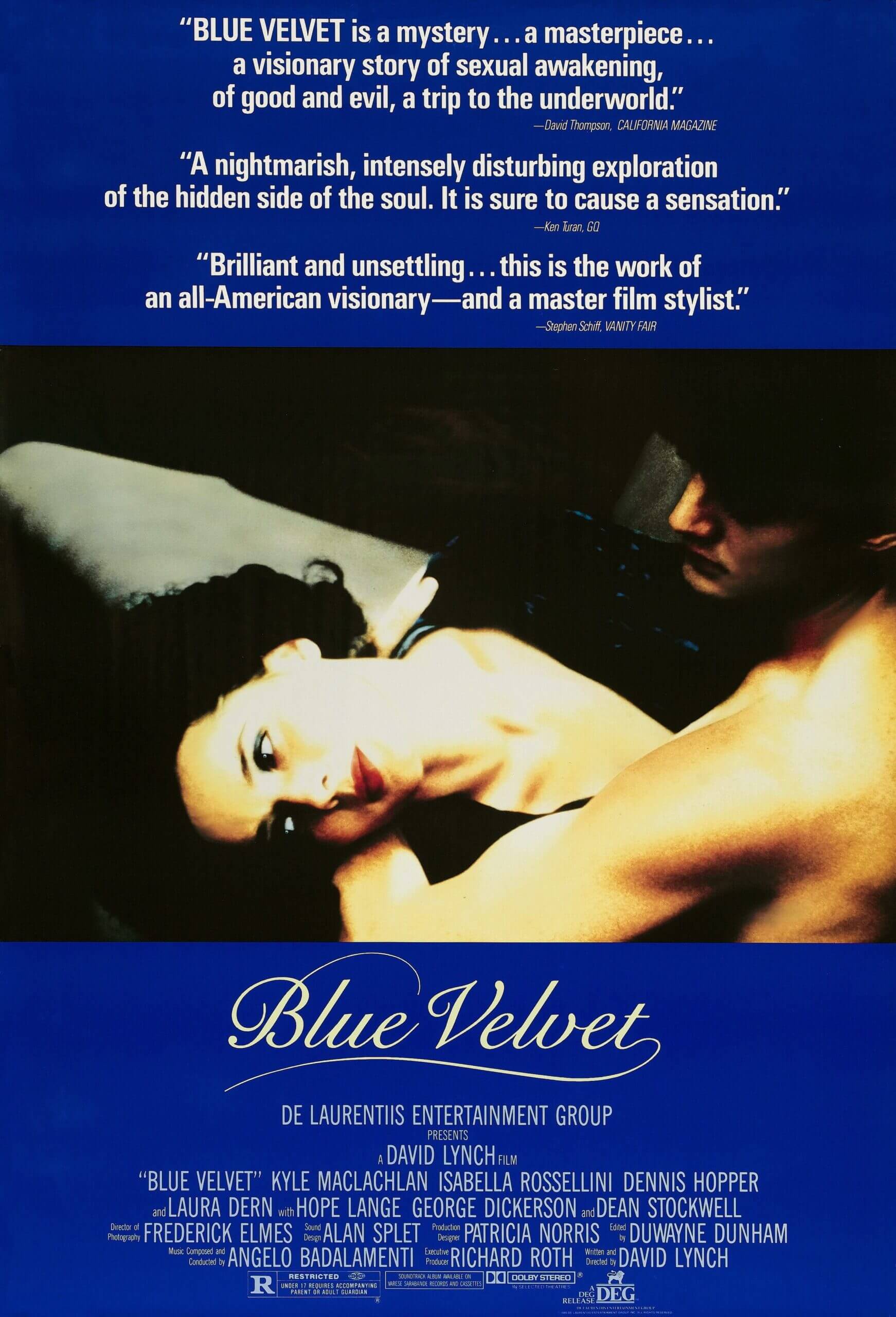
Thank You for Supporting Independent Film Criticism
If the work on DFR has added something meaningful to your love of movies, please consider supporting it.
Here are a few ways to show your support: make a one-time donation, join DFR’s Patreon for access to exclusive writing, or show your support in other ways.
Your contribution helps keep this site running independently. However you choose to support the site, please know that it’s appreciated.
Thank you for reading, and for making this work possible.
Brian Eggert | Critic, Founder
Deep Focus Review


